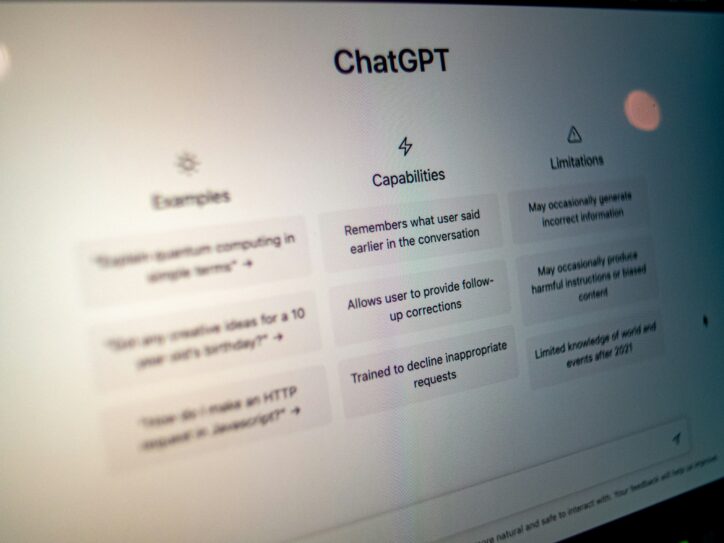Three Ways to Start Writing Collaboratively with A.I. Today
Despite some dismay and copyright lawsuits, A.I.-assisted writing is gaining more traction in the world of literature. As A.I. technology develops, applications for writing assistance are expanding beyond email generation to creative collaborations with writers of all stripes.
Authors like J. Thorn (who wrote the book series on A.I.-powered storytelling) put A.I. to work in their creative processes for brainstorming, plot design, style consistency, and character development. Learn more about his techniques and the future he sees for writers in Episode 40 of Creativity Squared.
The winner of a major international literary prize announced last month that ChatGPT authored five percent of the winning story, which critics called “flawless.” Just this week in Japan, judges announced the annual winners of the Nikkei Hoshi Shinichi Literary Award, honoring sci-fi authors who incorporate futuristic technology (such as A.I.) in their writing process.
There’s an A.I. solution to assist with every kind of written communication imaginable. Microsoft Copilot and Google Gemini stand ready to write that email to your boss. OpenAI’s ChatGPT can help you find the right words for your vows, and for a fee, specialty A.I. writing products help authors and creators optimize their production process. With some tinkering, you can even train your own A.I. model on your writing style.
Which option is right for you? That depends on what you write, your budget, and whether you prefer a DIY or turnkey solution. Whatever your circumstances may be, here are three ways you can start writing collaboratively with A.I. today.

Option 1: Use a Foundation LLM Like ChatGPT
The most accessible option for A.I. writing assistance is a large language model (LLM) chatbot like ChatGPT or Anthropic’s Claude. Both offer free access plans, but more capable models require a paid subscription. Depending on the user, paying for a multimodal LLM may be worth the investment, especially if you plan to use the subscription for more than just writing.
Getting started with an LLM as a writing assistant is as easy as typing in a text box, but mastering it requires a little finesse and a lot of instructions. LLMs hold a lot of information, but they don’t automatically have the necessary context to respond how you expect. Unless you structure your prompt and tell it exactly what to do, even the most capable LLMs might miss the mark on substance or tone.
Many major LLMs offer ways to refine the range of responses. One way is fine-tuning. There are two basic methods to fine-tune an LLM, varying from model to model. The easiest method is to max out the information that the A.I. considers before generating a response, aka the context window. GPT and Claude users can supplement the context window with additional reference material by attaching files to their prompt. A writer with a portfolio of previous work can use this option to demonstrate their personal style, tone, and formatting or comply with a client’s brand guide. A writer relying on research can attach their reference texts to ask questions, generate insights, and make connections. Context window size varies across models, from hundreds of pages of text to tens of thousands.
Another method for fine-tuning an LLM is through custom instructions (GPT), aka system prompts (Claude). An LLM will automatically consider custom instructions before generating any response; copying and pasting instructions for every new chat is unnecessary.
By providing custom instructions that aren’t likely to change from one chat session to another, writers can set guidelines, goals, and expectations for their A.I. collaborations. Practical instructions from writers might include information about their publisher, target audience, writing objectives, preferred tone, and style guidelines (Pro tip: attach some of your writing and ask the A.I. to describe your writing voice in a few sentences, then paste that response into your custom instructions.)
Custom instructions can strengthen collaboration in both directions. If you know you struggle with writing imagery, metaphors, or correct grammar, you can instruct the LLM to automatically suggest edits without asking. Depending on your needs, you can instruct an A.I. to assume the persona of a subject expert or a patient writing coach.
Once your A.I. model of choice has the proper context, you’ll want to craft an effective prompt. Humans and A.I. might communicate through natural language, but we don’t interpret language the same way, and meaning gets lost in translation.
At a basic level, longer and more specific prompts get better results than simpler prompts. “Write me a 750-word blog in a compassionate tone about how Prince Harry and Megan Markle separated from the British Royal Family” will get you a better response than “write a nice blog about the royal family drama.”
A.I. models still tend to do their own thing, even with detailed prompts. Users and researchers have found that A.I. models often need extra support or motivation to perform effectively. For instance, if the chatbot struggles to answer a multi-step prompt thoroughly, tell it in your following prompt to “take a deep breath and approach the task step-by-step.” Threats and bribery can also produce better results. Nobody knows exactly why these coercion tactics are effective, but the results speak for themselves.
For proven results, countless resources online offer engineered prompt templates you can copy and paste. For the launch of Claude 3 earlier this month, Anthropic released a public library of effective prompts.
The last advice for writers collaborating with A.I. is to ask for multiple variations of each response. Have you ever gotten frustrated for laboring over a single phrase of a long-form piece? If so, break the bottleneck by getting your options. Then, you can curate the best bits from each one and puzzle-piece them together. This method also works for brainstorming new ideas.
While there’s a learning curve, foundation LLMs offer an excellent entry point for A.I.-curious writers. Those on a budget can take advantage of free A.I. models for editing and feedback, while paid plans offer higher-quality responses from more powerful models with greater capacity for context. If you plan to write collaboratively with an LLM, it’s worth learning about prompt engineering and fine-tuning to avoid headaches.
While a foundation LLM checks many boxes for writers, it’s not the best option for everyone. Those interested in a more turnkey solution can choose from an array of new and established A.I. writing assistant software as services.
Option 2: Specialty A.I. Writing Assistant
A.I.-assisted writing tools are a good option for maximizing efficiency, guidance on good writing, and keeping everything organized in a single user interface. Some of these products are general writing tools, while others market specifically to novelists, screenwriters, poets, etc.
We’ll get deeper into a few popular products, but the most important note is that many of them are built on top of a third-party foundation model or multiple models in some cases. One of the most popular writing assistants, Jasper, runs on a combination of GPT, Claude, and Google’s open-source PaLM. A few commercial writing assistants like Writer run on proprietary A.I., but the industry trend leans toward building features around an existing LLM.
Pricing varies for an A.I. writing assistant depending on the available features, target customer, and subscription tier. Jasper, which mainly targets copywriters and marketers, offers a basic plan for $39/month and a pro plan for $59/month – two to three times the cost of ChatGPT Plus. Jasper users also get a suite of specific tools for multichannel marketing campaigns, blogs, copywriting, SEO, content strategy, and social media marketing.
Rytr offers a streamlined assistant with plans tailored to individual creators, including a free option capped at ten thousand generated characters per month. Their paid plans start at $7.50/month for unlimited text generation, tone-matching, preset tones, and plagiarism checks.
Sudowrite is a highly-rated assistant designed for fiction writers. Starting at $10/month for students and hobbyists, users can get A.I. support from the first page to the final draft from a team of more than 24 third-party models. Sudowrite says it can expand on rough ideas, untangle complex dialogue, recommend pacing, rephrase, and help writers move the story forward.
Copy.ai is an A.I.-powered communications platform for entrepreneurs and startups going to market. Their free and basic plans offer marketing features similar to Jasper’s but at a slightly lower price. For $36/month, paid users can build automated A.I. content workflows and publish automatically through CMS integrations. Reviews of Copy.ai highlight that the A.I. actively seeks user input and feedback to refine generated text.
With so many tools to choose from, the only barrier to getting a quick start with A.I.-collaborative writing is deciding which one to use. The decision comes down to the kind of writer you are, how much you’re willing to spend, and the features that matter most to you. Experiment with free access plans and free trials to see how assistants differentiate themselves. Remember that many tools rely on third-party models that you can access directly and use to build a personal assistant, which some see as the future of A.I. writing.

Option 3: Train a Custom GPT With Your Writing
A.I. collaborative author J. Thorn believes that A.I. will eventually make it almost impossible to earn a living from publishing literature and that we’ll all have on-demand novels tailored to our taste and mood. The quality of AI writing is a long way off from being anyone’s personal bard, but Custom GPTs available from OpenAI bring us a little closer to the personalized AI agents of the future.
Custom GPTs from OpenAI take fine-tuning and prompt engineering to the next level, allowing GPT Plus and Enterprise users to build task-specific versions of GPT. Setting up a custom GPT takes minutes with OpenAI’s GPT builder. Just describe what you need your GPT to do, and the builder will write some basic instructions to get started. You can customize how your GPT behaves when it doesn’t have up-to-date information and in similar situations.
GPTs let creators upload a knowledge base of files for reference material, and you can set instructions for how the GPT uses that knowledge in its responses. Prompt libraries can help optimize instructions for your use case, and a live preview window lets you test the GPT as you update its instructions.
Power users can integrate one or multiple GPTs with external services in multistep workflows to systematize their writing process. With the right stack of integrations, a DIY A.I. user could develop their own alternative to Jasper or Copy.ai.

Don’t Write-Off A.I.-Assistance
Although the advances to LLMs so far haven’t done much to improve the persistent quirks of generated writing, authors across genres are warming up to A.I. as a powerful collaborator.
Writers who want to collaborate with A.I. have countless places to start, including foundation LLMs, purpose-built A.I. writing assistants, and personalized GPTs. Many of these options are free or budget-friendly and can scale up with better features at higher prices to suit your needs.
The barriers to authorship have never been lower, and now is the perfect time to share your story.
Creativity Squared envisions a world where A.I. helps artists thrive, so let us know about your experience with A.I. writing assistance, or share your A.I.-assisted writing with us on social media!
